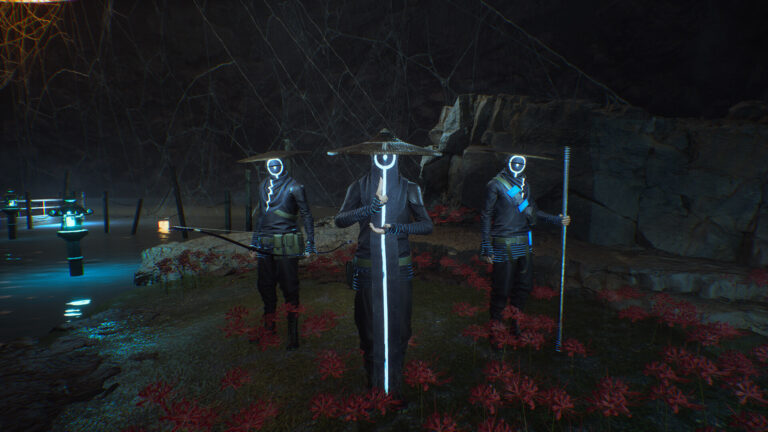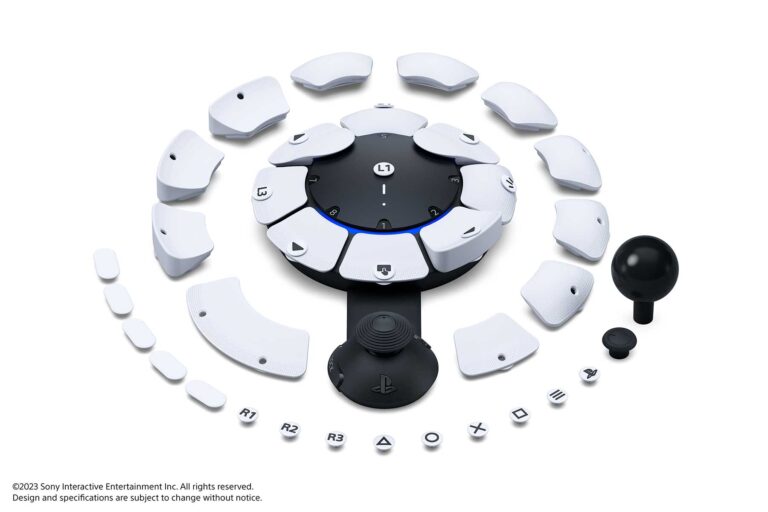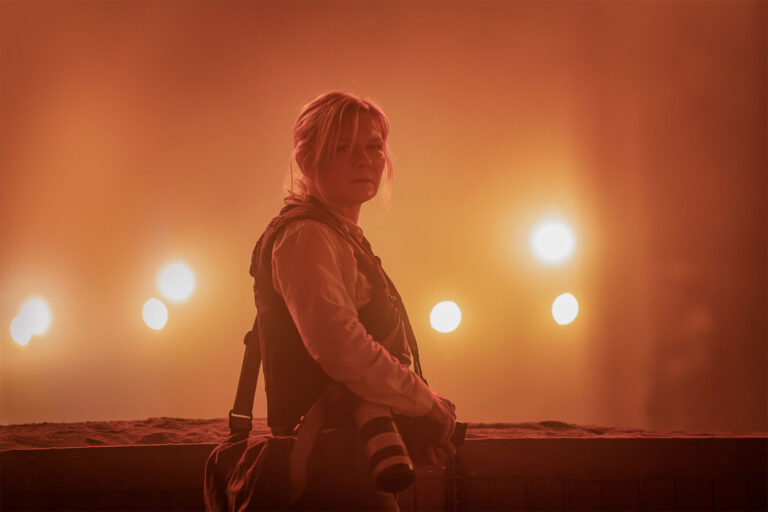Cities in Motion -päiväkirjat kertovat suomipelin synnystä

Suomalainen liikennesimulaattori Cities in Motion on nyt kaupoissa. Mutta miten peliä on kehitetty, miten se on muovautunut ja valmistunut?
Colossal Orderin pelintekijät ovat kirjoittaneet kehityspäiväkirjaa, jonka avulla voit sukeltaa pelintekemisen maailman uumeniin. Päiväkirja kattaa kaikkiaan noin vajaan kahden kuukauden mittaisen ajanjakson joulukuu 2010 molemmin puolin.
Päiväkirja on kirjoitettu englanniksi kansainvälistä yleisöä varten. Kynän varressa ovat heiluneet pelin pääsuunnittelija Karoliina Korppoo ja graafikko Tarkko Oikkonen.
Tekijä: Colossal Order
Julkaisija: Paradox Interactive
Saatavilla: PC
Pelaajia: 1
Pelin kotisivu: http://www.citiesinmotion.com
Lue arvostelu: Cities in Motion (PC)
Cities in Motionissa pelaaja astuu kaupungin joukkoliikenteestä vastaavan yhtiön johtoon. Pomojehun harteille lankeaa vastuu firman taloudesta, markkinoinnista ja linjojen organisoimisesta, joten lankoja riittää vedeltäviksi. Homma ei ole ihan helppo, sillä velkaraha on kallista, eivätkä bussit, metrot ja muut kulkupelitkään pelkällä pyhällä hengellä liikahda. Asiakkaan pirulaiset eivät tykkää, jos talouskriisin aikaan bussilippu maksaa kuukausipalkan verran, ja firman maine kärsii ikävästi, mikäli voitot riivitään duunarien selkänahasta.
Cities in Motion – A Prelude – Developer Diary #1
Hi to everyone from a cold place called Finland! I’m Karoliina, and I work as a game designer at Colossal Order, a game studio. We have been working on a PC title, Cities in Motion, for some time now. Cities in Motion is a public transportation tycoon game inspired by the great classics Traffic Giant and Transport Tycoon. The development has been super exciting and we want to share the experience with you. You can expect a bi-weekly article posted on the Paradox Forums about the game and the team working on it.
So, let me tell you more about the game. Cities in Motion is a nice mix of management and construction. You can build a transportation network of stops, stations, and rails for many different vehicle types, and then adjust ticket prices, maintenance costs, and wages to achieve the perfect balance. The game begins in 1920 with a timeline of 100 years, and during the different eras, the cities’ economies will fluctuate according to global economical changes. So as the leader of the fleet, it’s important for you to check the budget often and learn to anticipate how the prices will develop to make the most of your business.
Why did we want to make Cities in Motion, you might ask? One of the main inspirations was our team’s passion for transportation games. We love management simulations and are fond of watching a living, breathing city with numerous citizens going about their daily lives. Our main goal in Cities in Motion has been to give you this feeling of a bustling city, ever changing and growing, with lots of people living and working in it. Every person living in a city is unique: they have a name, a home, and a workplace. Citizens have their own cars but would prefer reasonably priced, fast public transportation to get to their destinations. Can you offer it to them?
We feel that putting an emphasis on the citizens brings much to the game, that transporting people might be the most exciting. We also wanted to focus on the architecture and on how to present the feel of real cities. We chose four European cities to be the canvas for your transportation network. Since each city has its own special atmosphere, we had team members visit Vienna, Berlin, and Amsterdam to get the proper feel and bring back pictures of the beautiful places and architecture that we could use in the game.
Besides the uniqueness of the citizens, another reason for choosing to limit the cargo to passengers was that we wanted a well-scaled game that focuses on those beautiful European cities. With a small team, we couldn’t make a huge, epic game, so our focus was on well-designed maps as well as interesting transportation methods. The stunning graphics that show the beauty of the cities are the great work of our talented artists.

A screenshot of the Vienna map.
We at Colossal Order want to offer you the challenge of building and managing your own transportation system for 100 years in the life of a growing city and a fluctuating economy. Can you do it better than they do it in the real world?
Cities in Motion – Developer Diary #2 – Lines
Hi again! Thanks for reading and commenting on the first developer diary for Cities in Motion. It raised a lot of questions about building lines in the game, so I decided to write a little about it. Since Cities in Motion is about public transportation, building and maintaining lines for different vehicles is essential.
Building lines works like this: you select the vehicle type you want to build for and are presented with a choice of stop or station types (depending on the era and vehicle type) and rails, if the vehicle needs them. Say you want to build a tram line. You would start by choosing the tram icon and building the tram tracks. You would then see different types of stops, like a stop with only a sign and a stop with shelter.
Trams are wonderful because you can lay rails in places where automobiles cannot go. You could take a detour through a market area or build tracks on the grassy median between two lanes on a busy street. When you are building tracks, you see icons indicating if the track is not connected. Trams cannot turn on tracks, so the line needs to be circular or have little loops at the ends. The tracks appear instantly as you build them, but do not hinder other vehicles.
Once the rails are in place, it’s time to build stops. If you have a circular line, you’ll have to keep all the stops on the same side of the tracks. With the looped lines, you can position stops with more freedom. You can use different stop types on the same line, if you want to. The type of stop to use is dictated by the expected amount of passengers: more expensive stops draw more passengers (if there are any available in the area), but have higher maintenance costs.
When you have placed stops, the line is ready to open. You then just need to pick the order in which the stops are visited, choose the vehicles, and give it the green light!
Lisää upeita pelivideoita (e)Domen videokanavalta osoitteesta https://www.youtube.com/user/wwweDomenet
Cities in Motion – Dev Diary 3 – Making Maps
This time, I want to tell you about designing maps for Cities in Motion. Even good game mechanics would go to waste without good level design and well-constructed maps, so the maps were one of the parts that we really put a lot of time and effort into.
Cities in Motion is, as the name implies, set in cities. The team chose four large European cities to be in the game, and all of the buildings and props were designed to work well with these different cities. Since it wouldn’t be much fun to completely replicate cities in the game world, some streamlining needed to be done. What are the most important parts of a city? How do you make the cities recognizable? What are the most important elements in a map to make playing fun?
First, we searched for maps, travel guides, and photos of the cities. Just running simple picture searches on the net provides a pretty good idea of what the most important buildings and sites are. After studying the cities carefully, level design moved on to choosing map sizes and molding the terrain. Even with the terrain, decisions had to be made on what to keep and what to drop, since all areas, such as small islands, just wouldn’t have had enough space for everything. It was still important to fit the most important areas on the map, even if in reality they were further from the center of the city; there is only so much space on the game map.
After the terrain has been modified to suit the city, the next step is to add roads and eventually housing. The road system requires much thought, because small roads easily become crowded with cars but large roads take away space from buildings and don’t always fit well in the center of a city. Also, there are many different road types, ranging from foot paths to multi-lane highways, so the design also needs to keep in mind the era and size of the city. In smaller spaces, like the center of Helsinki or Amsterdam, it was sometimes really hard to squeeze the roads and buildings to fit on tiny islands and other narrow strips of land.


Buildings are essential, since they dictate how many people live in an area and what social group they represent, and also affect the workplaces and leisure options. All in all, the buildings dictate where to put the lines when playing. For example, it wouldn’t bring much to the game if factory areas were situated right next to the homes of the people living there, because it would be really hard for the player to offer cheap transportation from home to work. It is much more interesting to put industrial areas on the outskirts of the city, or even outside it, as in many instances that is where they are actually located, with the workers living near the center of the city. The player will have many possibilities in building lines to take the workers from their homes to the workplace.


When all the buildings and roads are in place, the last things to do are place props and name all the streets and areas. It’s a huge task! Maps are used as a reference when naming the streets, so every road you find in the game exists (or has existed) in real life. To top it all, the levels have a timeline, so after building the whole city in the first possible year (1920) there’s still a hundred years of changes, upgrades, and expansions to each city!
Cities in Motion – The Citizens – Developer Diary 4
This time, the diary is about the people living in the cities.
In Cities in Motion, the main goal is to provide the city’s residents with public transportation. To make things interesting, there are many different kinds of people living in each city. Having lines that cater to their different needs is the key to success.

The citizenry are divided into seven social groups: students, business people, blue-collar workers, white-collar workers, tourists, dropouts, and pensioners. Most of the groups commute to work, which is one of the biggest reasons why people move around the city. Some, like pensioners and tourists, obviously don’t work, but they do have other needs for transportation, like going shopping, sightseeing, or for a stroll in the park. Students travel to the university and some also work part-time. The blue- and white-collar workers also have other things to do besides work – amusement parks and shopping malls always draw crowds. Airports and railway stations are likely destinations for all social groups, as everyone needs to travel at some time. Business people are more likely to travel and prefer the fastest options, regardless of the cost. Other groups are more concerned about ticket prices. Students are willing to pay only a small amount, as are pensioners. Workers move around a lot, so they prefer reasonably priced routes that don’t have many line changes. Blue-collars usually work in factories, which require lots of employees, so whenever you find a factory on the map, you can be pretty sure that loads of people are there, coming and going.

Every person living in the city is an individual. They have a name, a face, and a home, as well as personal preferences for leisure activities. Some like to spend their free time playing tennis or taking a walk in the park, while others would rather go to see a football game or shopping. You can save citizens in ”Customer profiles” to easily track them at all times. Different social groups also live in different areas. You are more likely to find wealthy business people in villas, and blue-collar workers and students in apartment blocks.

We did a lot of research on different eras to find the right clothing styles and names for citizens. As the game progresses, the citizens change according to the era they are in. You can expect to see everything from flapper skirts to sleek 1980s business clothing! Some people also own cars and eventually upgrade their rides to modern standards, so you can still see a few 1930s cars on the streets 10 or 20 years later, but they won’t last forever.
Cities in Motion – Developer Diary #5 – The Hofburg Palace
My name is Tarkko, and I’m one of the environment artists at Colossal Order working on Cities in Motion. I was asked to give you a little insight into the process of creating buildings for the game.
For this demonstration I have chosen one of the most famous historical landmarks in Vienna, the Hofburg Palace. Since the 13th century, this monumental building complex has housed some of the most powerful people in Austrian history. Many pivotal and memorable events are centered upon this very landmark, and the sight of it has quite likely been etched onto the retinas of every Austrian. I will be concentrating on the Neue Burg section of Hofburg, built between 1881 and 1913.

The Hofburg Palace in the game
The challenge comes from several different things, including questions on how to adapt the structure into the game, and what level of detail is reasonable to maintain. Moreover, for a building like Hofburg, there is plenty of work and precision required, so it’s hard to even decide where to begin. So, where should one start?
For us, the beginning dates back to when our team visited Vienna in early 2009 to collect reference material and study the city’s transportation system. The Internet usually offers a good amount of reference material for famous landmarks, but nothing beats the real thing. The material we collected was very valuable because with it, one could get more in touch with the true essence of the building and thus study it more intimately. When working on a landmark, I’d say the most crucial part for a game artist is to really capture the essence of the building. In reality, it’s almost impossible to create an exact 1-to-1 copy of the structure, model every tiny dent polygonprecisely, and to texture it down to the last pixel. So, in a sense, you’re compelled to make compromises. The way I think about this is that you shouldn’t even aim to just make a carbon copy of the building in the first place; you need to make the building your own but retain the original essence.

Our Lead Artist Antti Isosomppi at Hofburg
I began by studying the collected reference material. It’s important to know your subject well, so for work like this, I’d really suggest researching the history of the building. Not only is it fascinating and educational, but the background work helps you to orientate yourself to the task at hand. We decided that it might be better to draw orthographic images from photographs for 3D modeling, as we couldn’t find any useful blueprints of the structure. We like to do this for more complex structures because it greatly helps to understand the relative sizes of each part of the building and to perceive details that could have been missed otherwise.

Orthographic drawings for Neue Burg
The next step is to finally move on to the 3D aspect of the creative process. I set up my orthographic images on planes inside 3D software and position them according to the overhead projection image taken from Google Maps (Google Earth and Bing Maps with the “Bird’s Eye” function have proven to be really useful for references while working on content, which is usually seen from an isometric angle) which shows the base of the building. In reality, the Neue Burg section is only a small part of the Hofburg complex, but due to the game system’s size limitations, we had to cut out the other sections of Hofburg. This is really just a simplified representation of what’s supposed to be there, but the curving shape of the facade makes Neue Burg really stand out from the rest of the complex.

Modeling out different segments of Neue Burg
Because of the game’s perspective, I needed to focus on how the building would look when being seen from a top-down view, so I didn’t need to worry much about the polygons underneath. As I model further, I also keep unwrapping the object’s UVs for texturing. If you unwrap while you’re still building the model, it’s sometimes helpful to place temporary textures to help you observe whether you’re going in the right direction. For Neue Burg’s textures, it was decided that the photographs we took should be used as much as possible. The photograph-based texture would later be retouched and painted over – in Cities in Motion, texturing is really painstakingly pixel-precise work.
As this is one of the buildings with a glass ceiling, the interior of the marble hall was also done. For this, a separate texture map was used. The interior hall object was later attached to the main building object. After I finished the base model and texture, I did some additional detailing by adding the angel statues on the rooftop and the Doppeladlers (the crowned double-headed eagles). During this stage, I also fixed some remaining UV issues and did the whole texture retouch process.

Angel statues and Doppeladlers on the roof
When I was done with the modeling aspect along with the diffuse texture, it was time to move on and work on other maps. Specular maps are used to single out the shiny and reflecting surfaces which – in case of buildings – are usually windows, rooftop plates, and pipes.After specular maps, we process the normal maps out of bump maps. We create the grayscale bump maps by hand, painting over the diffuse map and looking for the spots that either bulge out or inset. Photoshop’s high-pass filter is useful for the most difficult parts of this process. Then we use this simple and handy little application called Crazy Bump which allows you to generate normal maps out of your freshly made bump map – a truly formidable program that makes life a little easier for people like me.
Our engine also demands the creation of a separate ambient occlusion map (also called light map). This requires a different UV channel, so basically you need to unwrap the entire object again so that you don’t get any overlapping faces. The use of automatic unwrapping techniques is advisable, even though they will only get you so far; there’s always some manual tweaking to be done. After a separate UV set is completed, we bake out the AO map in the 3D software.
We also use illumination maps and colorization in Cities in Motion, but neither of those were required for the Hofburg. When the model is finalized, the last step is to create a level of detail (LOD) version of the building to be used for further camera distances. The LOD process is rather complex, since now all the information of our separate maps (diffuse, normal, and AO) need to be combined into a single map. Basically, we create a low-polygon version (target polygonal resolution is roughly 10-25% of that of the original) of the building into which the combined map is baked using software called x Normal.

All the different maps used in the Hofburg and a wireframe model
With close to 20,000 triangles, the Hofburg is one of the most geometrically heavy buildings in the game. I had to simplify the building a lot to fit it in the game environment; I also tried to preserve its original essence well as I could while still giving it my own touch. When creating buildings for Cities in Motion, one of our main objectives was to give them a miniature-like feel, so we greatly simplified the models, much like they would simplify miniatures of the buildings in real life. When creating a building, you might often find yourself thinking, ”Man, I really wish I had a miniature like this!” I hope that this feeling is conveyed to players as well.
Lisää upeita pelivideoita (e)Domen videokanavalta osoitteesta https://www.youtube.com/user/wwweDomenet
Cities in Motion – Developer Diary #6 – Testing
Testing is one of the most demanding parts of game development. Not only is it quite boring, but it also takes a lot of time and repetition, and trained testers are generally few and far between. With Cities in Motion, we did most of the testing with our team, just checking that the designed features work as intended and playing if we had some extra time on our hands.
Some of the bugs that came up were just general glitches but some were really funny, and those are the ones I’d like to share with you!

First, there were the invisible waterbuses. All of a sudden, about half of the waterbuses in Amsterdam turned invisible. You could still see the smoke coming from the pipes and the number of passengers on board, but the vessels themselves were nowhere to be seen. Also, this affected only half of the waterbus fleet, even when they were all of the same type and on the same lines. The passengers didn’t seem to mind; they confidently walked onto the invisible boats. This bug was likely due to old saves in a new version of the game, so your waterbuses should stay visible!

Next, we had people with supernatural abilities: they could walk on water! Again, this one has to do with the waterbuses. Every waterbus has gates through which the passengers enter and leave. All of the boats are different and are inspired by real boats and ferries, so the gates were positioned differently on each vehicle. Every vehicle in the game has certain entry and exitpoints for the passengers, so the little people really walk in and out of the vehicles through the doors. These points have to be marked on the vehicles’ 3D models. Unfortunately, one of the waterbuses with a port on itsrear side had its entry and exit points a bit off. This made the passengers walk to the rotor of the ship, and since the piers are of a fixed size, they had to take a shortcut over the water to get there. So, there you have it: passengers walking on water!

Then on to my personal favorite: the flaming obelisk! There can be fires in the cities: sometimes, a building catches fire and the fire trucks arrive and block the street until they extinguish the blaze. However, this feature was built so that it affected all the structures that were not props, so everything that wasn’t a small detail, like a phone booth or a park bench, could catch fire. During the first closed beta test, one of the testers found a stone obelisk on fire in his city. All weird bugs are now called ”flaming obelisks”by the team.
The best part is that you can enjoy your own flaming obelisk in the game! The possibility of it happening is really small (since there are around 3-10 statues in a city and hundreds of buildings) but it’s still there, so keep an eye out for this rare and pretty funny feature. We decided that most of the statues in the cities have been coated with flammable paint.
Lisää aiheesta
Cities in Motionissa pelaaja astuu kaupungin joukkoliikenteestä vastaavan yhtiön johtoon. Pomojehun harteille lankeaa vastuu firman taloudesta, markkinoinnista ja linjojen organisoimisesta, joten lankoja riittää vedeltäviksi. Homma ei ole ihan helppo, sillä velkaraha on kallista, eivätkä bussit, metrot ja muut kulkupelitkään pelkällä pyhällä hengellä liikahda. Asiakkaan pirulaiset eivät tykkää, jos talouskriisin aikaan bussilippu maksaa kuukausipalkan verran, ja firman maine kärsii ikävästi, mikäli voitot riivitään duunarien selkänahasta.
Cities in Motion –ennakko (PC)
Nyt näyttää kuitenkin siltä, että peleistä ja kepeästä kaupunkisuunnittelusta pitävät saavat haluamansa ja vieläpä kotimaisin voimin toteutettuna, sillä suomalainen Cities in Motion vaikuttaa veikeältä peliltä.
Cities in Motion – suomalaista joukkoliikennettä Transport Tycoonin hengessä
Cities in Motion -strategiapeli jatkaa klassisen Transport Tycoonin jalanjäljillä, keskittyen suurkaupunkien liikennesuunnitteluun ja liikenneongelmien ratkomiseen. Dome piipahti pienen Colossal Order -pelifirman toimistolla haistelemassa fiiliksiä valmistumaisillaan olevasta pelistä ja sen tekijöistä.










